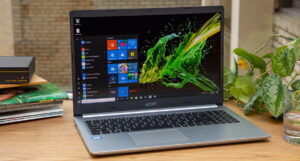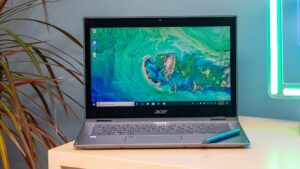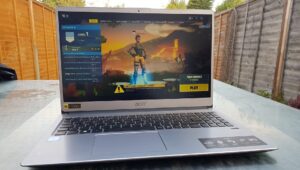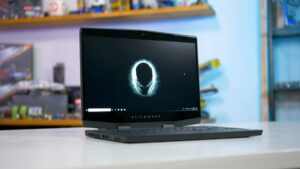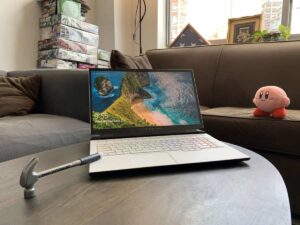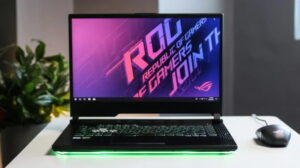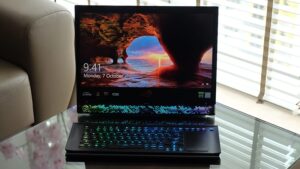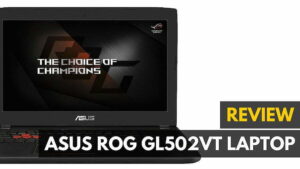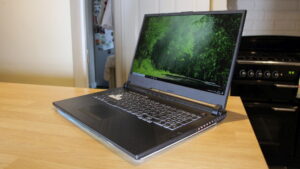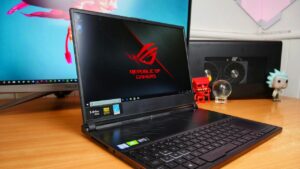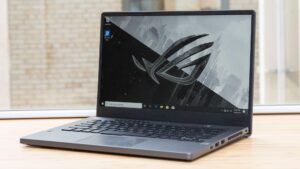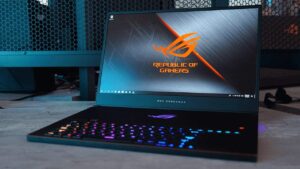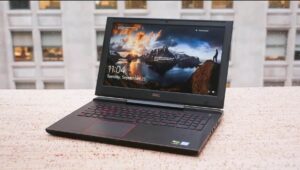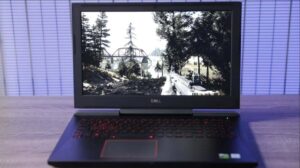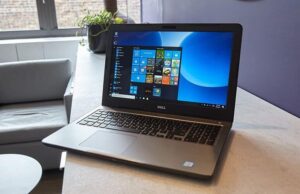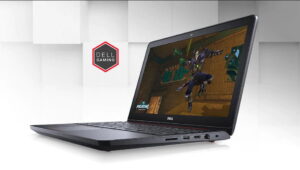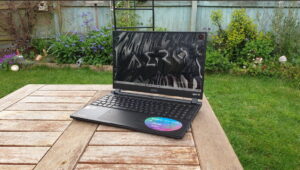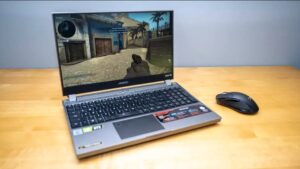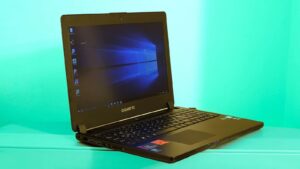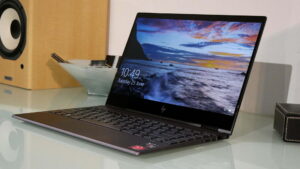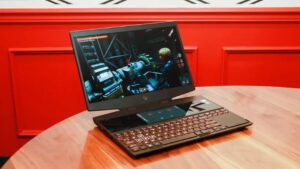We are always on the lookout for the best gaming laptop brands and ASUS is one of them. We’ve already seen from the Asus Republic of Gamers G75 laptop review that their monitor was almost at the top of our list. So the question remains: does the new ASUS G752VT have what it takes to top that list? Continue reading our Asus Rog G752VT review to see what it does right — and the many areas where the laptop still has room to improve. It’s a good way to filter out the best gaming laptops.
Overview
Summary: The ASUS ROG G752VT tries to live up to the pedigree established by its older brother, but falls short in critical areas that make a gaming laptop worth the investment.
Price: $1,649.00 on Amazon
Available: Now
Model #: G752VT
What We Liked
- Solid benchmark performance for a laptop in its price bracket
- Keyboard was spacious and comfortable
- Impressive connectivity options
What We Didn’t
- Design isn’t my favorite
- Extremely heavy
- Screen wasn’t great to look at, despite G-Sync compatibility
- Battery life was unimpressive
Asus G752VT Specs
| Processor | Intel 6th-Gen Skylake Intel Core i7-6700HQ |
|---|---|
| RAM | 16GB DDR4 |
| Storage Space | 128GB SSD/1TB HDD |
| Display Size | 17.3″ |
| Graphics Card | Nvidia GTX 970M |
| Display Resolution | 1920 x 1080 FHD IPS LED |
| Touchscreen | |
| Battery Life | 2hrs 53min full-load/4hrs 38min idle |
| Price | $1,649.00 |
| Buy |
Design
The shell of the ASUS looks like something straight out of the mid-90’s…and not in a good way. Despite how much nostalgia I have for that era, the matted beige case and pale orange accents look positively prehistoric compared to competing machines, which is strange when you consider how drop dead gorgeous the G751 managed to be.
Related: Take a few minutes to also check out our ASUS ROG G531GT review.
Unfortunately, the inside isn’t much better. The gray-on-orange color scheme looks even worse when the red LEDs of the backlit keyboard are thrown into the mix, and it’s a bit baffling how the design was signed off on in the first place.
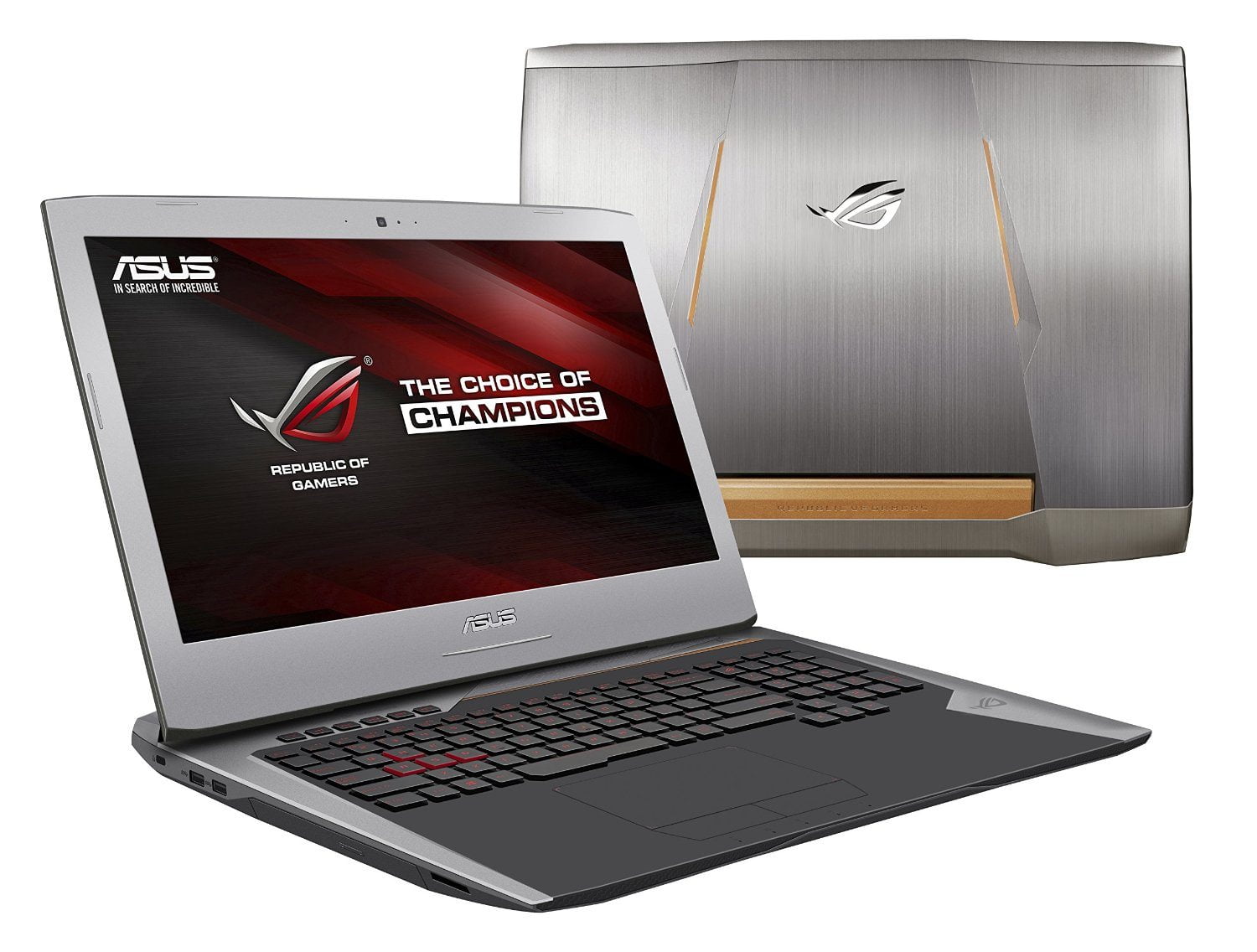
Of course, this isn’t even taking the sheer weight of the system into account. At 8.8lbs, the G752VT is one of the heaviest laptops we’ve heaved around to date, and it’s not nearly as comfortable as it should be on the arm in a bag, on the lap, or slung in a backpack. The added lip at the back of the laptop takes up space that would otherwise put more distance between where your eyes rest and the rest of the screen, which can make longer typing or gaming sessions strenuous.
Related: Read more about our ASUS ROG Mothership GZ700GX review.
We’ve been on the hunt for the best gaming laptops in 2017. Overall, we much prefer the design of competitors like Acer’s Predator 17 gaming laptop, which strikes a nice balance between PC gaming edge, and genuinely well-thought out design.
Software
Like the Acer, ASUS has included its own suite of proprietary support software, overclocking programs, and system monitoring tools.
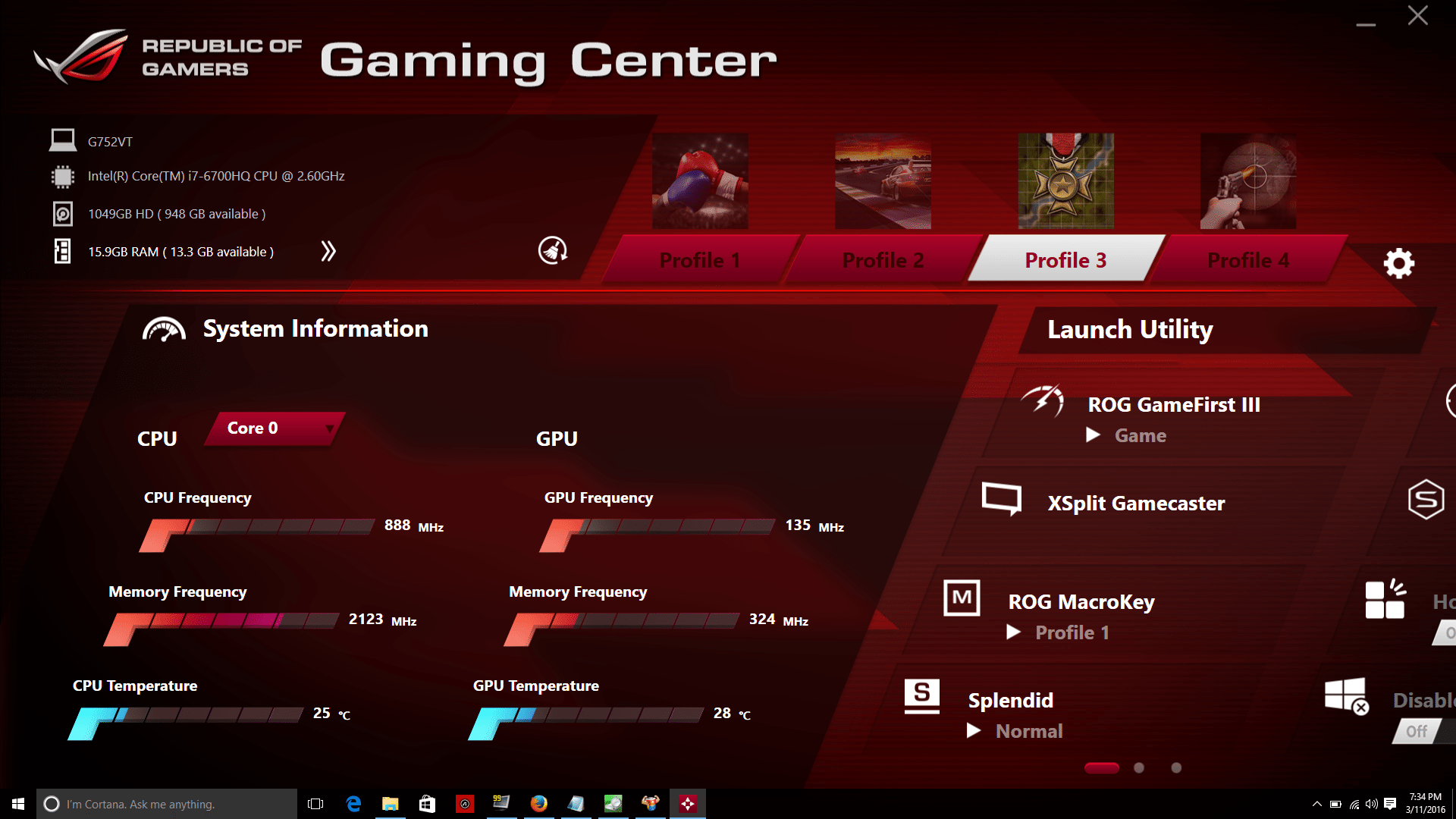
The added bloatware wasn’t intrusive or annoying, but it also didn’t provide a ton of useful utility either. The ROG gaming center monitoring tools only gave you brief glimpses into the current status of things like the laptop’s clockspeed and temperature, and while we could imagine the ASUS Macro Key application might see some use with the hardcore MMO set, to us it was just more wasted space.
Last there was a free-trial for the cloud service WebStorage, but with more than enough spare space on the included 1TB HDD and 128GB SSD, it really didn’t feel all that necessary to include it at stock.
Hardware
As one of the leading gaming laptops in its class, one area where the G752VT certainly didn’t slouch was in the hardware department. With a sixth-generation Skylake Core i7-6700HQ quad-core processor, 3GB GTX 970M graphics card, 16GB of DDR4 RAM, and a 128GB onboard SSD, the Asus came equipped with pretty much everything a gamer would need to get the absolute most mobile performance they need out a machine at this price point.
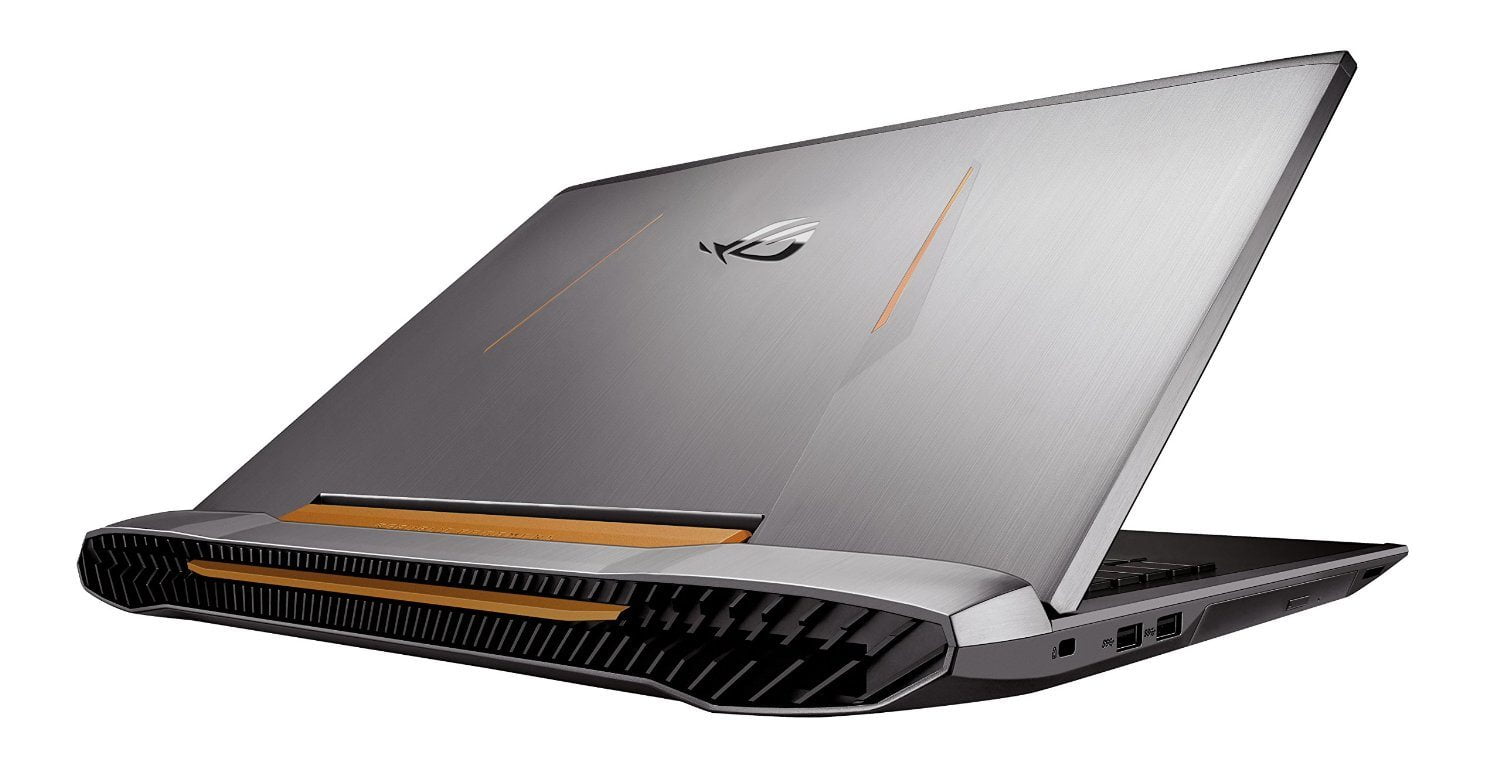
Connectivity options were equally impressive, with 4 USB 3.0 ports, one USB-3.1 Thunderbolt 3, 1 Mic/Headphone In/Out combo ports, 1 HDMI and an RJ45 ethernet connector with an SD card slot.
Performance
For the price, the G752VT performed admirably, keeping up with the Predator 17 which comes in at nearly $1,000 more at checkout. While the hard drive speeds certainly could have been better (we recorded a turtle-slow score of just 157MB/s write time on the internal SSD), the sixth-gen Core i7 processor and GTX 970M helped the Asus knock out solid scores in both Geekbench and 3DMark testing.
| Test | Result |
|---|---|
| SSD Read/Write | 723.8MBps/157.7MBps |
| HDD Read/Write | 145.9MBs/140.6MBs |
| Wi-FI Download/Upload | 251.84Mbps/201.57Mbps |
| Geekbench 3 Scores (Single-core/Multi-core) | 3,3551/13,356 |
| 3DMark Fire Strike Score | 6602 |
| Heroes of the Storm (Ultra settings average) | 165 FPS |
| Tomb Raider (Ultra Avg.) | 69 FPS |
| Witcher III (Ultra Avg.) | 47 FPS |
The internal WiFi performed respectably as well, with 251Mbps download and 201Mbps upload at a distance of 30ft, with two walls and a door blocking the path from the laptop to the router.
Battery
Gaming laptops aren’t usually known for their stellar battery lives, but the performance we got out of the G752VT was surprisingly poor even with expectations set as low as they were out of the gate. At load with The Witcher III running at full brightness, the GT752V puttered out at just 2 hours and 53 minutes, far below the threshold for the average gamer’s RPG session.
During idle without any activity and the screen at 100% brightness, we were only able to squeeze a measly 4 hours and 38 minutes out of the G752V, which is barely enough to get half a day’s work completed before needing to find an outlet.
Display
I’m still not sure what it is with the recent trend of gaming laptops splurging on some of the highest-end hardware possible, only to fall pitifully short when it comes to the quality of the screen.
The G752VT’s 17.3″ 1920 x 1080 FHD IPS screen is fine, but again, not great. When playing games there was an odd wash of colors that didn’t seem to match the game’s true aesthetic, and movies looked…eh. One theory is because the G752VT includes G-Sync compatibility (which can be an expensive component to add), this cost took away from the quality of the screen overall.
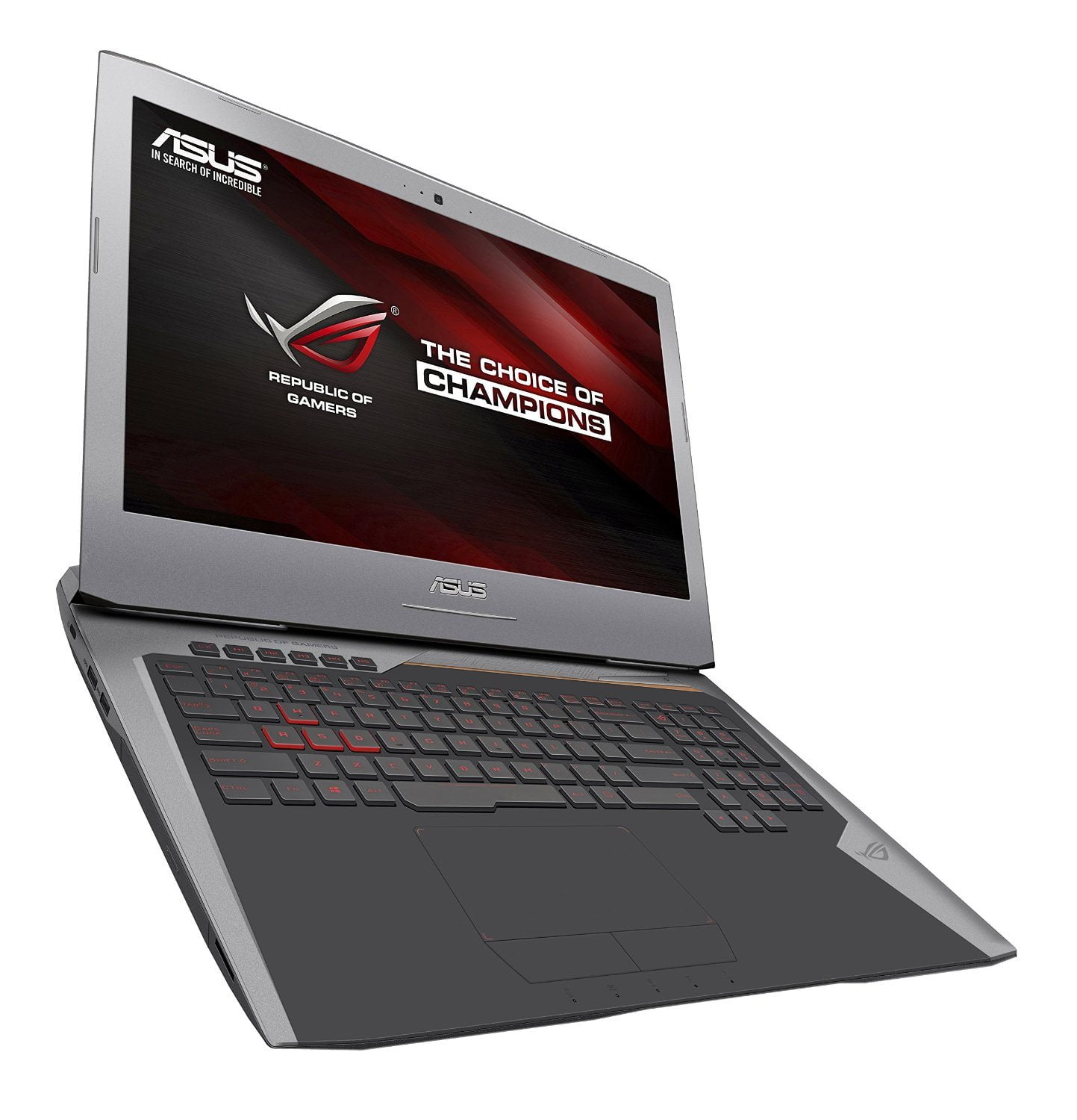
Either way, I found myself preferring the experience of the laptop when I didn’t have to look at the screen, but had it plugged into an external monitor instead. When you get a gaming laptop, you’re going for something that looks just as good at home as it does on the road, and if you open this laptop in either scenario, chances are you’re going to be disappointed with the results.
Wrap Up
Normally when a newer laptop takes up the mantle from an older model, you expect there to be an evolution of improvements across the board. Unfortunately, the ASUS G752VT doesn’t look as good as the G751, doesn’t perform that much better, and costs quite a bit more. If you want a gaming laptop that’s light enough to go where you do, performs reliabily, and doesn’t look like it just stepped out of a a time capsule, there are plenty of other more attractive solutions on the market which offer similar performance in a much prettier package.
The G752VT tries to take up the mantle left by its predecessor, and performed comparably with laptops twice its cost. Even so, we’d still much prefer picking up the G751 until ASUS works out the rest of the kinks in the design department and decides whether G-Sync is really worth the tradeoff.
Read Next: Best Gaming Laptop 2018
Related Articles:
